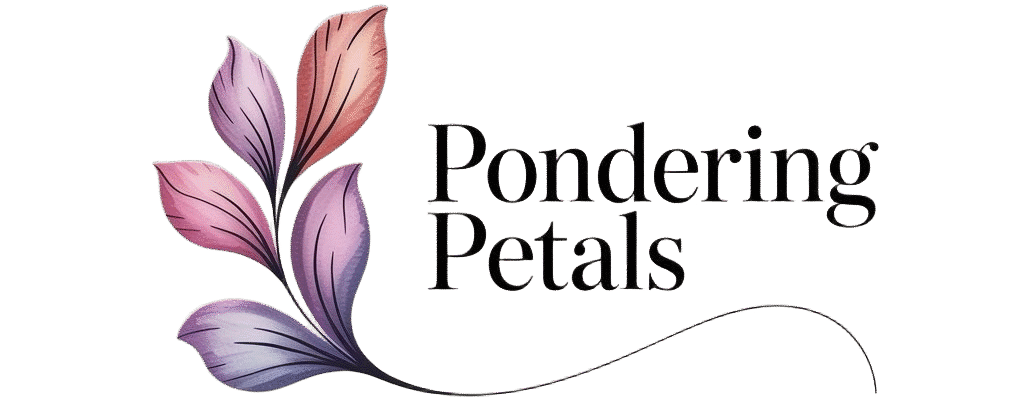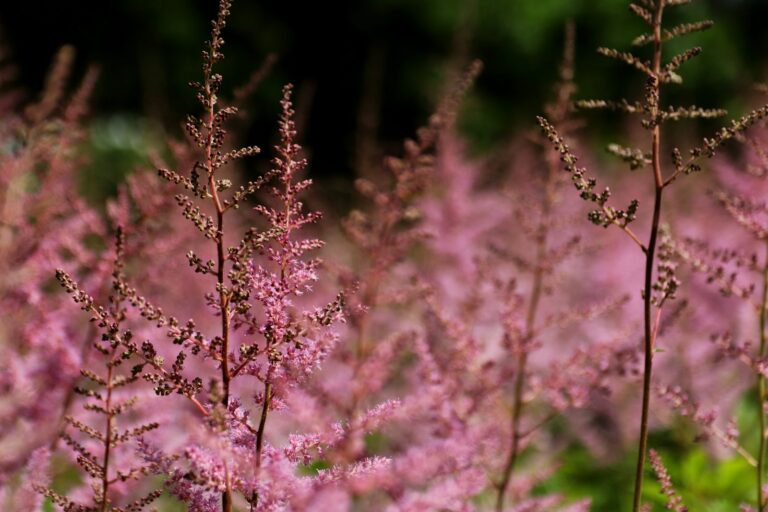Why Won’t My Astilbe Bloom? Flowering Problems Solved
Your astilbe produces healthy foliage but refuses to bloom while neighboring plants flower abundantly. The difference often comes down to soil nutrient deficiencies affecting bud formation[1]. Astilbe plants are heavy feeders that require adequate phosphorus to produce their characteristic plume-like flowers[1][2]. Understanding the specific conditions that trigger blooming helps transform non-flowering plants into spectacular displays.
Insufficient Sunlight Exposure
Lack of sunlight is one of the commonest reasons astilbe plants fail to blossom. These perennial plants love shade but require a delicate approach to light to grow flowers. Plants growing in deep shade produce foliage but without giving flower production altogether[1][7]. Morning light and afternoon shade is the best lighting[1]. Such combination allows sufficient energy for flowering to succeed with minimal exposure to heat stress.
Too much direct sun, on the other hand, kills flowers through heat stress. The bud set in sun-fed plants is difficult even at optimal conditions. Astilbe planted in bright sun locations tend to have difficulty setting buds even in the best conditions[2][8]. Hot afternoon sun prevents correct flower development[1]. Plants in sunny positions need more water than others for increased evaporation[2]. Shadier locations for sun-stressed plants often bring back planting blooms the following season.
Soil Conditions Affecting Blooms
The condition of the soil directly impacts whether astilbe flowers. Soil that has a high percentage of organic matter and has water levels consistently is necessary for these perennial plants[3][4]. Under dry conditions, plants abort flower buds[3]. It should not become bone dry in the growing season[2]. Bone dry soil causes the foliage to degrade and flowers to go extinct[4].
Waterlogged conditions have different moisture retention characteristics. Astilbe depends on well drained soil that remains moist but not wet[5][6]. Too much clay that stores too much water hinders healthy root function[5]. Winter root rot due to poor drainage and cold weather[1]. Improving drainage and retention of water, while repairing heavy clay by organic matter combined[5].
Good drainage is critical—more abelias die from waterlogged soil than any other cause.
Soil pH impacts the availability of nutrients for flower development. Astilbe prefers slightly acid soil conditions[1][8]. When soil pH becomes too alkaline, in spite of that natural condition, plants lose access to their necessary nutrients[1]. Testing the pH of the soil once every year tells how acidic it is and whether or not a plant needs it in order to survive[1]. If introduced in early spring, aluminum sulfate or sulfur dust can reduce pH levels[1].
Inadequate Nutrition and Fertilization
One of the leading causes astilbe does not bloom is poor nutrition. These plants are heavy feeders requiring frequent fertilizer[1][2][4]. Astilbe grows foliage at the expense of flowers[2], without adequate nutrients. Phosphorus is the direct promoter of flower bud formation and development[1][9]. More robust blooming occurs with fertilizers that have phosphorus ratios of equal to or greater than nitrogen[1][9].
Spring Feeding Schedule
Flowers are helped by spring fertilization during this growing season. Application should be made when the new growth is six inches tall[1]. Slow-release fertilizers give nutrients that are constant during the time of active growing[9]. An acceptable amount of phosphorus for blooms is provided in the ratio 5-10-5 or 10-10-10[8][9].
Fall Fertilization Importance
It prepares the ground for the blooms of the upcoming year. It buds in the late summer and early autumn which forms flower buds[3][4][9]. In the fall, high-nitrogen fertilizer is laid and promotes vigorous bud formation[2][4][9]. This timing becomes especially important for early flowering species, which set buds one to two months before flowering[1]. Failing to fertilize the seeds in the fall leads to a miserable spring bloom.
Organic Matter Additions
On top of synthetic fertilizers, there are organic matter additions. Using compost or well-rotted manure that will be worked into the soil twice yearly will promote more nutrient use[1][5]. They contain a slow-release nutrient source and improve soil structure[1][5]. Organic amendments also help to increase water-bearing capacity of soil[5].
Proper Watering Practices
Watering behaviour determines if astilbe development and opening of flowers are affected by watering practices. For example, lack of water at the time it produces a dry, dry bud formation causes a bud to dry out before buds can begin a flowering[3]. Plants require more like 15 cm of water weekly with deep watering[1][2]. Deep watering promotes deep root development compared to frequent watering with shallow waters[2]. Shallow watering results in weak root systems that cannot withstand the heavy flowering[2].
Recognizing Drought Stress
Drought stress disfigures signs of drought as scorched leaf edges and stunted buds[3][6]. Small leaves and brown leaf margins imply dry conditions in plants[3]. Even short dry periods at key buds development points impact flowering[3]. When mulching is applied, soil moisture in the water can be maintained after each watering session[2]. This two-inch mulch layer minimizes water evaporation drastically[1].
Root Disturbance and Plant Stress
Flowering is momentarily interrupted by root disturbance. The plants that have divided or moved or had their roots disturbed during the spring may not bloom in spring[3]. Astilbe takes time to restore the root system of itself before flower production resumes[3]. Disturbed plants usually recover and appear as normal the next season[3].
The time of root disturbance matters for the recovery of flowers. Late spring moving or heavy digging around already established plants negatively affects flowering more than early spring division[3]. It involves sufficient time for plants to form stable root systems prior to flowering[3]. Separating astilbe in early spring or fall reduces disruption to blooming[5][6].
Overcrowding and Division Needs
Overcrowded clumps yield increasingly fewer flowers over time. Division is advantageous to astilbe every three to five years according to its growth rate[1][5]. Crowded roots jockey for nutrients and water from the scarce soil space[1]. Fertilizing plant and healthy flowering are revived through division[5]. The newly divided clumps will have more productive growth than specimens with overgrown shoots[5].
On account of this, the division procedure itself reduces flowering temporarily. Plants in division spend their energy setting up roots and energy is thus spent on root rather than blossoming plants immediately following division[5]. This trade-off ensures stronger, more abundant blooms the years that follow[5]. Dividing after clumps of at least three years of age while waiting is crucial before clumping to ensure plants are young enough to ripen resiliently.
The difference between thriving and struggling astilbe comes down to one factor: proper care timing.
Environmental and Chemical Factors
Some flowers aren’t able to bloom for lack of chemical exposure. Herbicide drift or fertilizer by the application around the plants can have an impact on astilbe growth[3]. Even nondirect application of products to the plants can result in problems via root uptake or foliar contact[3]. The symptoms may not show at first but worsen poor flowering next season[3]. Only careful application of herbicides helps avoid inadvertent damage to desired plants.
Older plantings have declines brought about by age. The vigor of astilbe declines naturally and is not affected by age as clumps mature without division[1]. Plants that survived for years may start to flower less and less. This decline instead indicates a need for division rather than an unalterable problem. Frequent division every couple of years has kept the blossoms youthful and regular.
Selecting the Right Varieties
Blooming success is greatly shaped by variety selection. Various astilbe species and cultivars exhibit different tolerances in sun, drought, and soil conditions[5][7]. So varieties of Chinese astilbe prefer drier conditions than other varieties[1]. Fitting varieties into your growing situation adds quality to flowering efficiency[7]. Early, mid-season and late bloomers increase flowering duration overall when planted together[5][7].
| Astilbe Type | Drought Tolerance | Light Requirements | Bloom Time |
|---|---|---|---|
| Chinese astilbe (A. chinensis) | Higher | Tolerates more sun | Late summer |
| Japanese astilbe (A. japonica) | Moderate | Partial shade | Early-mid season |
| Arendsii hybrids | Lower | Shade to part shade | Mid season |
Diagnosing Your Specific Problem
Systematic assessment needs to ascertain the identifiable cause. Feel some parts of the soil many inches deep. Check to find soil moisture levels[2]. Monitor light levels during the day to detect true sun exposure[1]. Use soil pH to determine if acidification is necessary[1]. Look at nutrition schedule to make sure the plants get enough nutrients[2][9].
Common Diagnosis Steps:
- Test soil moisture depth by inserting finger 3-4 inches into soil
- Observe sunlight patterns throughout entire day
- Check for brown leaf edges indicating drought stress
- Review fertilization history for last 12 months
- Inspect plant crowns for overcrowding signs
Problem blooming is frequently caused by numerous causes. Solving one problem does not inevitably bring flowering full bloom[1]. A holistic treatment which fixes light, water, nutrients and soil conditions yielded the best results[1][2]. Most problems with astilbe blooming resolve with effective cultural care adjustments.
Key Sources:
[1] What to Do if Your Astilbe Fails to Bloom | Gardener’s Path
[2] My Astilbe Stopped Blooming – Causes For Astilbe Not Flowering | Gardening Know How
[3] Astilbe not well this year (no blooms) | Illinois Extension
[4] False Spirea (Astilbe x arendsii) | Illinois Extension
[5] Growing Astilbe in Iowa | Iowa State Extension
[6] How to Grow and Care for Astilbe | Clemson HGIC
[7] 7 Tips for Extending the Bloom Times of Your Astilbe | Epic Gardening
[8] Astilbe Aren’t Blooming | Plant Addicts
[9] When and How to Fertilize Astilbe | Gardener’s Path
Lily Morgan is a home gardener. She grows houseplants and designs small-space gardens. She shares what she learns from experience. Lily offers simple, practical tips for plant lovers. Her goal is to help others garden with confidence. She wants to help them grow, one leaf at a time.


